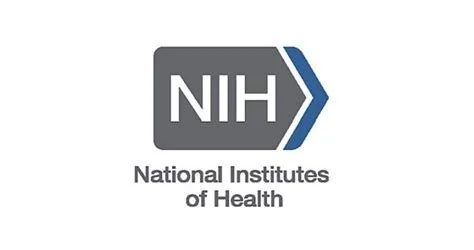FROM THE STACKS
EDITOR’S NOTE: There are literally thousands of journals published around the world that relate to the disability community. It is virtually impossible to capture even a fraction of them. HELEN receives "stacks" of journals and selectively earmarks what we feel are "must read" articles of interest for our readers. It's a HELEN perk!
Why Listening to Parents’ Intuition Can Save Lives in Pediatric Care
(Note from Rick Rader, MD, HELEN Journal Editor in chief): One of the most formidable tools and skills the physician needs to rely on daily is "active listening." This is especially true in the arena of treating children with developmental disabilities. Here the rule should always be to listen, respect and include the parents insights, gut feelings and intuition about the health of their children. Yes, they (parents) can be proven wrong, but research has demonstrated that they are among the most accurate barometers that something "just doesn't seem right."
By Tokunbo Akande, MD, MPH (07/09/2025; www.kevinmd.com)
“The value of intuition in clinical practice” prompted me to reflect on one of the deeper regrets I carry from my clinical practice—those moments when I didn’t fully acknowledge or act upon a parent’s intuition, often a mother’s, that something was wrong with their child.
As clinicians, we are trained to listen for clinical “buzz words”—specific complaints or symptom patterns that guide our diagnostic reasoning. These cues form the backbone of our workups and plan of care. Certain symptoms trigger standard evaluations, while others—”red flag” complaints—demand immediate and often urgent investigation. For example, vomiting with green (bilious) content in a neonate triggers a surgical rule-out for intestinal obstruction. These are patterns we are conditioned not to ignore.
This is where the art of medicine becomes more nuanced.
In these moments, we face a challenge: Balancing objective findings with the subjective weight of a parent’s intuition. The tension lies not just in clinical uncertainty but in how we affirm the emotional and psychological presence of the parent. It’s not only about diagnosing disease—it’s about helping someone feel seen, heard, and believed.
Over the years, I’ve learned to attune myself to what I call the “sixth sense red flag”—the subtle, often wordless indicators that something deeper might be happening. This includes the parent’s gut feeling, and sometimes, even my own quiet inner knowing. I now try to hold space for both: the science, and the sense.
The article in The Lancet beautifully captures this. It emphasizes that intuition, while not infallible, is a form of pattern recognition shaped by experience, observation, and often unconscious synthesis. It may not be teachable in the traditional sense, but it is certainly cultivatable.
This leads to some essential questions:
Can we train medical students and residents to respect and refine their intuition without compromising evidence-based care?
How do we create a culture where both parents and clinicians feel safe acknowledging the unspoken?
What practices help us stay connected to our inner wisdom amid the noise of metrics and protocols?
As a profession, we tend to devalue what we can’t measure. But maybe intuition isn’t unscientific—it’s just not quantifiable yet.
If we can honor it as one of many tools in our diagnostic arsenal, we may not only avoid missed diagnoses—we may also deepen the human connection at the heart of healing.
Have you had moments when your intuition—or your patient’s—proved right? I’d love to hear your stories.
Tokunbo Akande is a pediatrician and clinical informaticist.
NIH Launches Landmark Project on Whole-person Health and Function
NIH (09/17/2025)
The National Institutes of Health (NIH) has launched an effort to advance research on whole-person health and create an integrated knowledge network of healthy physiological function. Whole person health involves looking at the whole person—not just separate organs or body systems—and considering multiple factors that promote health. For example, a multicomponent lifestyle intervention including healthy diet, physical activity and stress management may improve multiple and interconnected aspects of health including cardiovascular (e.g. blood pressure), metabolic (e.g. glucose metabolism) and musculoskeletal function (e.g. muscle strength).
“Biomedical research is largely organized around the study of specific organs and diseases. In contrast, we do much less research on health itself, which is an integrated process involving the whole person,” said Helene M. Langevin, M.D., director of NIH’s National Center for Complementary and Integrative Health, which leads the NIH-wide program.
The five-year research initiative will proceed in several stages, drawing from existing scientific knowledge to develop a complete, working model of healthy human physiology. It will build on the NIH Human Reference Atlas and the Human BioMolecular Atlas Program (HuBMAP) to connect the complex anatomy and function of the body’s different organs and systems into a single “map.”
Future stages of the project will link common clinical measures, such as blood pressure, blood glucose and cholesterol, to major physiological functions. This initiative will also populate the framework with existing human data and ultimately build and test an interactive model of whole-person health.
“By organizing healthy physiological function into a whole-body knowledge network, researchers will be able to explore scientific questions about health in a new way,” said Dr. Langevin. “With our ability to acquire new scientific data at an increasingly dizzying speed, the importance of integrating and connecting new data to what we already know is greater than ever. The Whole Person Reference Physiome will lay a foundation for understanding the factors that drive declines in health and mechanistic pathways to health restoration.”
More information about the research program is available on the NIH Research Portfolio Online Reporting Tools (RePORT) website, here: https://reporter.nih.gov/search/NHCW3mdunUCF3ULUAvilYQ/project-details/11224772#description.
NCCIH conducts and supports rigorous scientific investigation into the fundamental science, safety, and effectiveness of complementary and integrative health approaches, as well as their roles in improving health and health care in a whole-person health framework. News releases, fact sheets and other NCCIH-related materials are available on the NCCIH website.
About the National Institutes of Health (NIH): NIH, the nation's medical research agency, includes 27 Institutes and Centers and is a component of the U.S. Department of Health and Human Services. NIH is the primary federal agency conducting and supporting basic, clinical, and translational medical research, and is investigating the causes, treatments, and cures for both common and rare diseases. For more information about NIH and its programs, visit www.nih.gov.
NIH…Turning Discovery Into Health®
Emirates is Set to Become the World’s First Autism Certified Airline
Photo: Emirates
(From News Australia)
– A move it describes as a milestone in making travel more inclusive and accessible for all.
The inaugural designation is set to be formally awarded by the International Board of Credentialing and Continuing Education Standards (IBCCES) in the coming months, when more than 30,000 Emirates cabin crew and ground staff will have completed the initial training.
Emirates is set to become the world’s first Autism Certified Airline.
The Dubai-based airline also plans to roll out new standards and services that will improve the on ground and inflight travel experience for both customers on the autism spectrum and their families and companions, to be announced later in the year.
In a statement, Emirates explained the initiative directly addresses the travel barriers faced by autistic people and their families, with research conducted by AutismTravel.com revealing that 78 per cent of families are hesitant to travel and 94 per cent would travel more if autism-trained staff were available.
(The initiative directly addresses the significant travel barriers faced by autistic people and their families. Picture: Emirates)
As such, more than 30,000 Emirates ground staff and cabin crew will undergo specialized training covering autism awareness and sensory sensitivities, with a target of at least 80 per cent of customer-facing staff completing the program.
The airline’s move is in line with Dubai ambition to become the most accessible destination in the world.
What is the Autism Certified Airline designation (ACA)?
Emirates worked collaboratively with IBCCES, a leading organization in autism and neurodiversity training and certification, to conduct an onsite review and comprehensive audit.
Using a data-driven approach, Emirates and IBCCES partnered to create a new blueprint for serving passengers with accessibility requirements, encompassing the entire journey – from ground services to in-flight services, and Emirates will lead the way in bringing these new standards into practice in aviation for the first time.
Over 30,000 Emirates ground staff and cabin crew will undergo specialised training covering autism awareness and sensory sensitivities.
The thorough certification process includes ensuring at least 80 per cent of customer-facing staff complete the dedicated training. It will equip staff with the understanding and skills to address needs of travellers with autism and sensory sensitivities, along with their families.
The training educates Emirates’ teams on the spectrum of autism, misconceptions and challenges faced, the myriad ways to assist customers dependent on their individual needs, and potential stimulus and triggers that staff should be aware of.
New standards and services for customers with autism
Emirates is also introducing innovative resources like digital ‘sensory guides’ detailing the airport and on-board environment.
One of the new services is ‘sensory guides’ – digital aids developed as part of the audit conducted by IBCCES in collaboration with Emirates that empower travellers to make informed decisions about the various environments encountered, and plan what suits their needs and preferences.
The guides were created by conducting comprehensive facilities audits across Dubai locations and the inflight experience, measuring sensory inputs in public areas such as sound levels, lighting, and potential sights and smells.
Another development expected in 2025 will be the introduction of neurodiverse sensory products, for customers on Emirates flights – sensory fidget toys or aids that can encourage focus, help to reduce self stimulatory behavior and de-stress.
Emirates’ new training program, as well as new standards and protocols to be implemented in stages in 2025 and beyond, will enable neurodiverse customers to fly more comfortably. it said in a statement.
It is aligned with the Department of Economy and Tourism’s (DET) vision of Dubai becoming the first Certified Autism Destination (CAD) in the Eastern Hemisphere.
Rising Cognitive Disability as a Public Health Concern Among US Adults
Trends From the Behavioral Risk Factor Surveillance System, 2013–2023
Neurology.org - Open Access (09/24/2025)
Ka-Ho Wong , Christopher D. Anderson, Cecilia Peterson, Erin Bouldin, Lauren Littig Neeharik Krothapalli, Trieste FrancisYvonne Kim, Giselle Cucufate, Jonathan Rosand Kevin Navin Sheth and Adam de Havenon
Abstract
Background and Objectives
Cognitive disability—defined by the Behavioral Risk Factor Surveillance System (BRFSS) as serious difficulty concentrating, remembering, or making decisions because of a physical, mental, or emotional condition—has become the most commonly reported disability among US adults. This broad definition reflects a heterogeneous range of underlying causes and highlights the growing public health significance of cognitive disability in the population. Previous studies have identified disparities by race, age, and socioeconomic status, but few have examined how these patterns have evolved over the past decade. This study analyzes national trends in self-reported cognitive disability from 2013 to 2023 using BRFSS data, with a focus on differences across age groups, racial and ethnic populations, and key social determinants of health.
Methods
We conducted a retrospective analysis using data from the Centers for Disease Control and Prevention's Disability and Health Data System, which integrates nationally representative responses from US adults (aged ≥18 years) in the BRFSS from 2013 to 2023, excluding 2020 and participants who self-reported depression, to better identify nonpsychiatric cognitive impairment. The primary outcome was self-reported cognitive disability, defined as “serious difficulty concentrating, remembering, or making decisions.” Survey-weighted logistic regression was used to model prevalence trends and examine associations with demographic and socioeconomic factors.
Results
From 2013 to 2023, a total of 4,507,061 responses were included in the analysis. Apart from analyses focusing on strata of age, all estimates of cognitive disability were age-adjusted. Most respondents were aged 18–39 years (36.8%), identified as non-Hispanic White (60.9%), and had completed at least a high school education (87.3%). The age-adjusted self-reported cognitive disability prevalence in the United States rose from 5.3% (95% CI 5.1%–5.4%) in 2013 to 7.4% (95% CI 7.2%–7.6%) in 2023, with statistically significant increases beginning in 2016. The prevalence of cognitive disability among younger adults aged 18–39 years nearly doubled, increasing from 5.1% (95% CI 4.8%–5.3%) to 9.7% (95% CI 9.2%–10.2%), making this age group the primary driver of the overall rise in cognitive disability in the United States.
Discussion
The disproportionate growth in cognitive disability among younger adults seems to be the primary driver of the overall national trend. These findings warrant further investigation, given their potential long-term implications for population health, workforce productivity, and health care systems.
Introduction
Disability affects more than 70 million adults in the United States, representing over 1 in 4 individuals. A 2022 analysis from the Behavioral Risk Factor Surveillance System (BRFSS) reported this prevalence, highlighting a significant increase compared with previous estimates.1 This surpasses figures reported in the 2016 BRFSS analysis conducted by the Centers for Disease Control and Prevention (CDC), which estimated that approximately 61 million US adults—around 1 in 4—were living with a disability.2 The increase in disability prevalence from 2016 to 2022 is likely attributable in part to the long-term effects of coronavirus disease 2019 (COVID-19). This is supported by data showing that the prevalence of long COVID symptoms was higher among individuals with disabilities (10.8%) compared with those without disabilities (6.6%).1 Furthermore, the 2016 BRFSS analysis identified cognitive disability as the second most common type of disability in the United States, with a prevalence ranging from 6% to 11%.2-4 The 2022 BRFSS report, however, indicated that cognitive disability had become the most frequently reported disability, with a prevalence of 14%.5
While robust literature has demonstrated that subjective self-reported cognitive impairment is associated with greater risk of future cognitive decline in older adults (≥60 years),6 it remains unclear whether similar associations exist in younger populations. Previous trend analysis studies examining self-reported cognitive impairment between 1997 and 2015 have observed disparities in the prevalence of cognitive disability, with higher rates observed among Black, American Indian/Alaska Native (AI/AN), and Hispanic populations.7 These disparities also vary based on age, nativity, and socioeconomic factors.3,4,8-10 In addition, adults with cognitive disabilities are less likely to receive preventive health screenings and are more likely to have chronic conditions compared with individuals without disabilities.8 However, previous analyses have not evaluated the impact of cognitive disability in cohorts excluding individuals with depression, which may confound associations with cognitive impairment.10 Existing literature demonstrates that depression can exacerbate both subjective and objective cognitive symptoms, with evidence supporting a bidirectional relationship between depressive symptoms and cognitive function over time.11-15 In addition, people younger than 60 years have not been specifically examined in these long-term studies, limiting our understanding of whether the prevalence of cognitive disability has changed over time in younger adults.
To determine whether associations between race, age, and other social determinants of health factors persist over a longitudinal period, we used data from the CDC Disability and Health Data System (DHDS), derived from the BRFSS from 2013 to 2023.16
Our analysis extends beyond previous research to incorporate a spectrum of demographic and socioeconomic factors, providing a more comprehensive understanding of the evolving cognitive disability landscape. The findings from this study are intended to inform future research initiatives aimed at addressing the increasing burden of cognitive disability.




